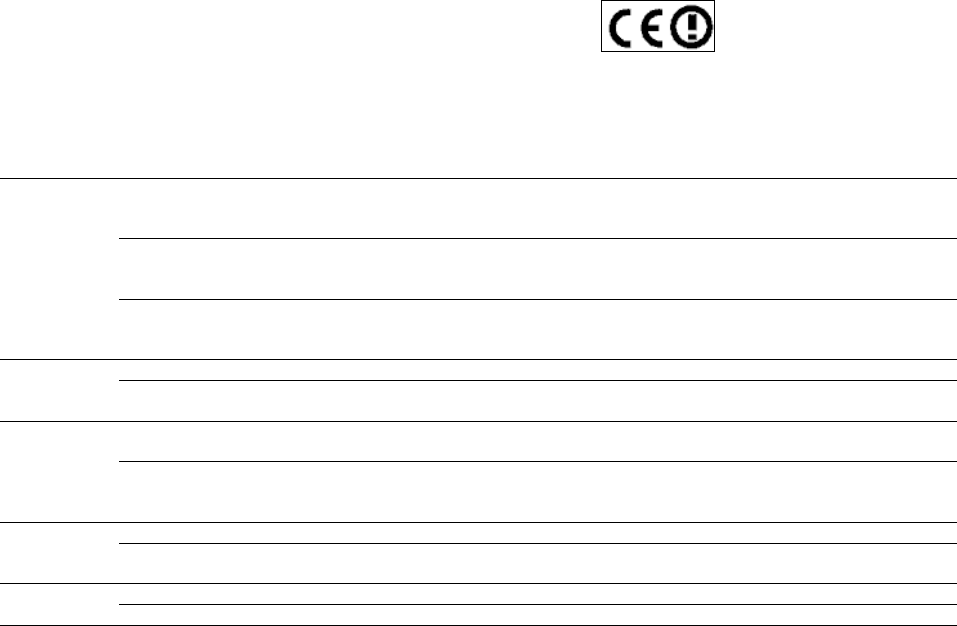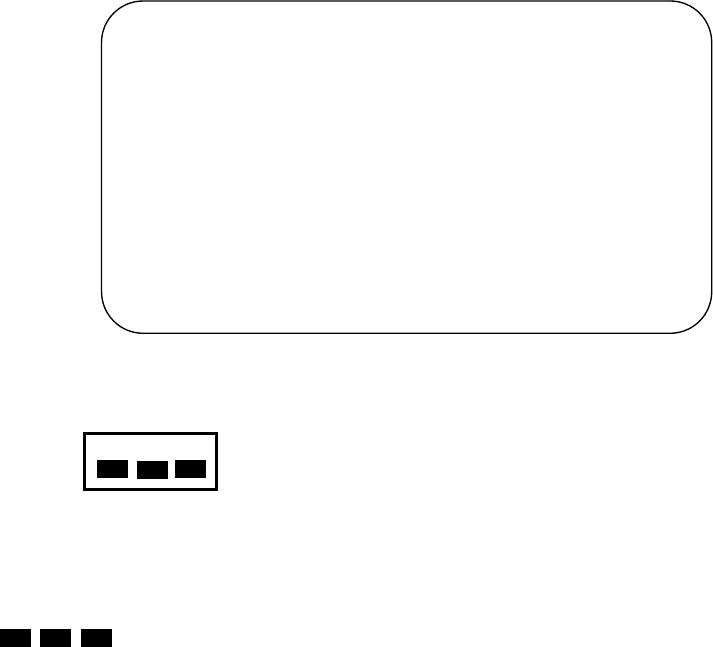Dynabook UPA3501WL PCI Express 802.11 b/g transceiver User Manual PA3501U addendum
Toshiba Corporation PCI Express 802.11 b/g transceiver PA3501U addendum
Dynabook >
Contents
PA3501U manual addendum

1
Information sheet
Wireless Interoperability
The Atheros AR5006EG Wireless Network Adapter products are designed to be interoperable with any wireless
LAN product that is based on Direct Sequence Spread Spectrum (DSSS) /Orthogonal Frequency Division
Multiplexing(OFDM) radio technology, and is compliant to:
■ The IEEE 802.11 Standard on Wireless LANs(Revision B/G), as defined and approved by the Institute of
Electrical and Electronics Engineers.
■ The Wireless Fidelity(Wi-Fi) certification as defined by the Wi-Fi Alliance. The “Wi-Fi CERTIFIED” logo is
a certification mark of the Wi-Fi Alliance.
CAUTION
Bluetooth™ and WirelessLAN devices operate within the same radio frequency range and may interfere with
one another. If you use Bluetooth™ and WirelessLAN devices simultaneously, you may occasionally experience
a less than optimal network performance or even lose your network connection.
If you should experience any such problem, immediately turn off either one of your Bluetooth™ or
WirelessLAN.
Please contact Toshiba PC product support on web site
http://www.toshiba-europe.com/computers/tnt/bluetooth.htm in Europe or
http://www.pc.support.global.toshiba.com in the United States for more information.
Wireless LAN and your Health
Wireless LAN products, like other radio devices, emit radio frequency electromagnetic energy. The level of
energy emitted by Wireless LAN devices however is far much less than the electromagnetic energy emitted by
wireless devices like for example mobile phones.
Because Wireless LAN products operate within the guidelines found in radio frequency safety standards and
recommendations, TOSHIBA believes Wireless LAN is safe for use by consumers. These standards and
recommendations reflect the consensus of the scientific community and result from deliberations of panels and
committees of scientists who continually review and interpret the extensive research literature.
In some situations or environments, the use of Wireless LAN may be restricted by the proprietor of the building
or responsible representatives of the organization. These situations may for example include:
■ Using the Wireless LAN equipment on board of airplanes, or
■ In any other environment where the risk of interference to other devices or services is perceived or
identified as harmful.
If you are uncertain of the policy that applies on the use of wireless devices in a specific organization or
environment (e.g. airports), you are encouraged to ask for authorization to use the Wireless LAN device prior to
turning on the equipment.
Regulatory Information
The Atheros AR5006EG Wireless Network Adapter must be installed and used in strict accordance with the
manufacturer’s instructions as described in the user documentation that comes with the product. This device
complies with the following radio frequency and safety standards.
GM9022201110
*GM9022201110*

2
Canada – Industry Canada (IC)
This device complies with RSS 210 of Industry Canada.
Operation is subject to the following two conditions: (1) this device may not cause interference, and (2) this
device must accept any interference, including interference that may cause undesired operation of this device.”
L ‘ utilisation de ce dispositif est autorisée seulement aux conditions suivantes : (1) il ne doit pas produire de
brouillage et (2) l’ utilisateur du dispositif doit étre prêt à accepter tout brouillage radioélectrique reçu, même si
ce brouillage est susceptible de compromettre le fonctionnement du dispositif.
The term "IC" before the equipment certification number only signifies that the Industry Canada technical
specifications were met.
To reduce potential radio interference to other users, the antenna type and its gain should be so chosen that the
equivalent isotropically radiated power (EIRP) is not more than that required for successful communication.
To prevent radio interference to the licensed service, this device is intended to be operated indoors and away
from windows to provide maximum shielding. Equipment (or its transmit antenna) that is installed outdoors is
subject to licensing.
Pour empecher que cet appareil cause du brouillage au service faisant l'objet d'une licence, il doit etre utilize a
l'interieur et devrait etre place loin des fenetres afin de Fournier un ecram de blindage maximal. Si le matriel
(ou son antenne d'emission) est installe a l'exterieur, il doit faire l'objet d'une licence.
Europe – EU Declaration of Conformity
Marking by the above symbol indicates compliance with the Essential Requirements of the R&TTE Directive of the
European Union (1999/5/EC).
Europe – Restrictions for Use of 2.4GHz Frequencies in European Community Countries
For private usage outside buildings across public grounds over less than 300m no special registration with
IBPT/BIPT is required. Registration to IBPT/BIPT is required for private usage outside buildings across public
grounds over more than 300m. For registration and license please contact IBPT/BIPT.
Voor privé-gebruik buiten gebouw over publieke groud over afstand kleiner dan 300m geen registratie bij BIPT/IBPT
nodig; voor gebruik over afstand groter dan 300m is wel registratie bij BIPT/IBPT nodig. Voor registratie of licentie
kunt u contact opnemen met BIPT.
België/
Belgique:
Dans le cas d’une utilisation privée, à l’extérieur d’un bâtiment, au-dessus d’un espace public, aucun enregistrement
n’est nécessaire pour une distance de moins de 300m. Pour une distance supérieure à 300m un enregistrement
auprès de I’IBPT est requise. Pour les enregistrements et licences, veuillez contacter I’IBPT.
License required for outdoor installations. Check with reseller for procedure to follow Deutschland:
Anmeldung im Outdoor-Bereich notwendig, aber nicht genehmigungspflichtig.Bitte mit Händler die Vorgehensweise
abstimmen.
Restricted frequency band: only channels 1 to 7 (2400 MHz and 2454 MHz respectively) may be used outdoors in
France.
France:
Bande de fréquence restreinte : seuls les canaux 1- 7 (2400 et 2454 MHz respectivement) doivent être utilisés
endroits extérieur en France. Vous pouvez contacter I’Autorité de Régulation des Télécommuniations
(http://www.art-telecom.fr) pour la procédure à suivre.
License required for indoor use. Use with outdoor installations not allowed. Italia:
E’necessaria la concessione ministeriale anche per l’uso interno.
Verificare con i rivenditori la procedura da seguire.
License required for outdoor installations. Check with reseller for procedure to follow. Nederland
Licentie verplicht voor gebruik met buitenantennes. Neem contact op met verkoper voor juiste procedure.
To remain in conformance with European spectrum usage laws for Wireless LAN operation, the above 2.4GHz channel
limitations apply for outdoor usage. The user should use the wireless LAN utility to check the current channel of operation.
If operation is occurring outside of the allowable frequencies for outdoor use, as listed above, the user must contact the
applicable national spectrum regulator to request a license for outdoor operation.
3
USA-Federal Communications Commission (FCC)
This equipment has been tested and found to comply with the limits for a Class B digital device, pursuant to
Part 15 of FCC Rules. These limits are designed to provide reasonable protection against harmful interference
in a residential installation. This equipment generates, uses, and can radiate radio frequency energy. If not
installed and used in accordance with the instructions, it may cause harmful interference to radio
communications. However, there is no guarantee that interference will not occur in a particular installation.
If this equipment does cause harmful interference to radio or television reception, which can be determined by
tuning the equipment off and on, the user is encouraged to try and correct the interference by one or more of the
following measures:
-Reorient or relocate the receiving antenna
-Increase the distance between the equipment and the receiver.
-Connect the equipment to outlet on a circuit different from that to which the receiver is connected.
-Consult the dealer or an experienced radio/TV technician for help.
TOSHIBA is not responsible for any radio or television interference caused by unauthorized modification of the
devices included with this Atheros AR5006EG Wireless Network Adapter, or the substitution or attachment of
connecting cables and equipment other than specified by TOSHIBA.
The correction of interference caused by such unauthorized modification, substitution or attachment will be the
responsibility of the user.
Caution: Exposure to Radio Frequency Radiation.
The radiated output power of the Atheros AR5006EG Wireless Network Adapter is far below the FCC radio
frequency exposure limits. Nevertheless, the Atheros AR5006EG Wireless Network Adapter shall be used in
such a manner that the potential for human contact during normal operation is minimized. In normal operating
configuration, the LCD in the upright position, the distance between the antenna and the user should not be
less than 20cm. (regular type) The antenna(s) used in this device are located at the upper edge of the LCD
screen, and this device has been tested as portable device as defined in Section 2.1093 of FCC rules when the
LCD screen is rotated 180 degree and covered the keyboard area.(tablet type) In addition, Wireless LAN has
been tested with Bluetooth transceiver for co-location requirements. This device and its antenna(s) must not be
co-located or operating in conjunction with any other antenna or transmitter. The installer of this radio
equipment must ensure that the antenna is located or pointed such that it does not emit RF field in excess of
Health Canada limits for the general population; consult Safety Code 6, obtainable from Health Canada
’s
website www.hc-sc.gc.ca/rpb.
Taiwan
Article 12
Without permission granted by the DGT, any company, enterprise, or user is not allowed to change frequency,
enhance transmitting power or alter original characteristic as well as performance to a approved low power
radio-frequency devices.
Article 14
The low power radio-frequency devices shall not influence aircraft security and interfere legal communications;
If found, the user shall cease operating immediately until no interference is achieved.
The said legal communications means radio communications is operated in compliance with the
Telecommunications Act.
The low power radio-frequency devices must be susceptible with the interference from legal communications or
ISM radio wave radiated devices.
Using this equipment in Japan
In Japan, the frequency bandwidth of 2,400~2,483.5MHz for second generation low-power data communication
systems such as this equipment overlaps that of mobile object identification systems (premises radio station
and specified low-power radio station).

4
1. Sticker
Please put the following sticker on devices incorporating this product.
2. Indication
The indication shown below appears on this equipment.
(1) 2.4:this equipment uses a frequency of 2.4GHz.
(2) DS:This equipment uses DS-SS modulation.
OF:This equipment uses OFDM modulation.
(3) 4:The interference range of this equipment is less than 40m.
(4) :This equipment uses a frequency bandwidth from 2,400MHz to 2,483.5MHz.
It is possible to avoid the band of mobile object identification systems.
3. TOSHIBA Direct PC
Monday – Friday : 10:00 – 17:00
Toll Free Tel : 0120-15-1048
Direct Dial : 03-3457-4850
Fax : 03-3457-4868
Device Authorization
This device obtains the Technical Conditions Compliance Approval, and it belongs to the device class of radio
equipment of low-power data communication system radio station stipulated in the Telecommunications
Business Law.
The Name of the radio equipment: AR5BXB61
DSP Research, Inc.
Approval Number: D05-0110003
The following restrictions apply:
■ Do not disassemble or modify the device.
■ Do not install the embedded wireless module into other device.
Trademark
Bluetooth is a trademark owned by its proprietor and used by TOSHIBA under license.
2.4DSOF4
(1) (2)
(3)
(4)
The frequency bandwidth of this equipment may operate within
the same range as industrial devices, scientific devices, medical
devices, microwave ovens, licensed radio stations and non-licensed
specified low-power radio stations for mobile object identification
systems (RFID) used in factory production lines (Other Radio Stations).
1.Before using this equipment, ensure that it does not interfere
with any of the equipment listed above.
2.If this equipment causes RF interference to other radio stations,
promptly change the frequency being used, change the location of use,
or turn off the source of emissions.
3.Contact TOSHIBA Direct PC if you have problems with interference
caused b
y
this
p
roduct to Other Radio Stations.